
Introduction
The SaaS subscription business models are extremely popular nowadays. According to a study, 75% of businesses will be subscription-based by 2023.
The subscription business model brings companies closer to their customers. They can use diverse digital marketing strategies to sell to their potential customers directly.
This business model works for all digital businesses. But, for software-based businesses, subscription services are the best revenue generation source.
According to Gartner, 80% of all new entrants in the SaaS industry offer subscription solutions to their customers.
Unlike other industries, SaaS companies don’t offer one-time purchase products; instead, they retain customers on a recurring subscription-based model.
That’s why promoting SaaS platforms needs unique and distinct techniques rather than accomplishing traditional strategies.
But this doesn’t mean selling subscriptions is easy for software businesses. In fact, 63% of businesses stated that converting users into subscribers is their biggest challenge.
Therefore, we have compiled this guide to help SaaS businesses sell more subscriptions this year. Here, you can learn how to sell subscriptions using the top 10 SaaS marketing strategies. So, let’s get started.
What is a SaaS Subscription?
Software as a service (SaaS) has gained widespread acceptance in nearly every industry. This is because SaaS enables businesses to become more agile; by transferring on-premises software solutions to the cloud.
It reduces the business expenses and responsibilities associated with managing and maintaining costly in-house servers.
At the same time, they can keep up with new patches and accelerate their software deployments and configurations. Businesses can also reduce their reliance on additional IT staff and free up in-house professionals to focus on more strategic concerns.
Subscription pricing is a natural fit for this software model. SaaS vendors can sell limited-duration subscriptions instead of perpetual licenses, which require users to pay a one-time fee for ongoing access to a software solution.
These vendors retain complete ownership of the software, selling access to it rather than the software itself. In exchange, these vendors generally agree to provide ongoing maintenance, repairs, support, and updates, all included in the subscription price.
The vendor also retains the right to change the software and user access, with the details clearly defined in the end user license agreement (EULA).
4 Main SaaS Subscription Types
Before learning how to sell subscriptions, let’s explore the SaaS subscription types you can offer to your users:
Annual subscription
An annual subscription is the most common type of SaaS subscription model. It locks users into a specific service for one year. After that, clients make a one-time payment and can renew after 12 months.
Although some businesses may prefer this method because it allows them to operate without worrying about making monthly or quarterly payments, it may also exacerbate commitment fears among company leaders who must stick to budgets.
Short-term subscription
Short-term SaaS subscriptions enable businesses to purchase licensing rights on a quarterly, monthly, or other time-limited basis. In addition, short-term contracts reduce the risk of lock-in by allowing users to reevaluate and replace underperforming service providers.
Furthermore, the threat of customer churn forces vendors to improve their products constantly. Simultaneously, vendors can frequently charge more for their overall services than they would under an annual contract.
Pay per use
Pay-per-use is a subset of standard SaaS subscription models rather than a foil to them. Clients are changed in a pay-per-use pricing model based on the amount of data or other resources they use or the number of users on a specific account.
It enables businesses to downsize without worrying about paying for services they aren’t using. This model can also benefit vendors by allowing them to match incoming revenue to expenses more accurately.
Micropayments
Micropayments in SaaS subscriptions are an extension of the pay-per-use model. It involves minimal sums of money in exchange for itemized access to software services. While each transaction may be worth less than a dollar (or even less than a cent), microtransactions compensate for these small amounts through volume. When spread thin across a large user base, microtransactions can generate significant revenue for the vendor.
In addition, the low costs of each transaction keep customers from becoming dissatisfied with the price. Vendors must consider a cost barrier, however, because many credit cards (and non-credit card transactions) may be incapable of handling such small amounts as individual purchases.
How to Sell Subscriptions Using the Dynamic SaaS Sales Strategy?
You need a dynamic sales strategy to improve your SaaS subscription sales. The SaaS subscription selling strategy focuses on customers’ needs and how your product can help them. To create your dynamic sales strategy, you can consider the following points:
Know your customers
Because subscriptions are based on recurring relationships with your customers, you must thoroughly understand their needs, wants, and motivations. As a result, the sales strategy required to persuade a small business owner — will be vastly different from that needed to convince an experienced CTO.
This information can be challenging to come by when you’re just starting. You’ll have to make assumptions based on your industry’s buyer personas and existing customer data. As your business grows, you’ll be able to reach out to existing customers and prospects with more targeted inquiries.
The more data you have, the more accurate your decisions will be.
And that’s where we enter. UnboundB2B has a large database that you can use to target your potential customers. We also run several marketing strategies and growth plans to drive customer data. You can connect with our team today to better understand your customers.
Collect your market data
B2C and B2B SaaS companies must understand their industry’s market conditions. Is it expanding rapidly or slowly? Who are the current occupants? What method do they use to sell subscriptions? Knowing these answers can help you shape your company’s subscription sales strategy.
This information can be gathered during your research on positioning and product-market fit. When you understand how the various players in your market sell subscriptions, it can give your sales team more context when discussing the benefits of your product.
Create user cases
When your sales team can provide concrete examples of how your product helps other businesses achieve their goals, they will be more effective. Create use cases based on customer and market research to demonstrate your subscription’s value to current customers.
We also follow this sales strategy. For example, we often publish our existing customer case studies to help new clients understand how we can help them in certain situations.
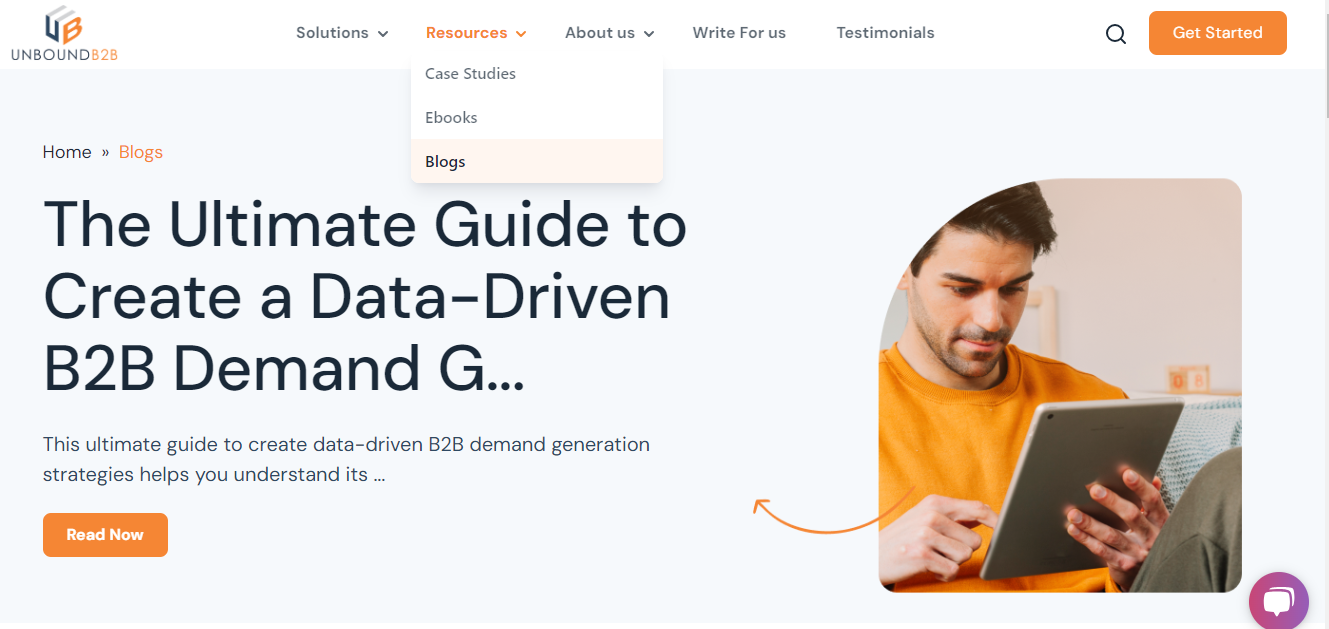
Concrete pricing structure
The price is one of the most important decisions you can make when selling subscriptions. When you can link your worth to the direct value your subscription provides customers, it simplifies the purchasing decision and can keep customers longer.
Here are some tips that you can follow to create a pricing strategy for your product:
- Pricing must be clear and simple to understand because most SaaS subscriptions are purchased through self-service purchase experiences.
- Ensure your pricing tiers are founded on thoroughly understanding each customer’s willingness to pay.
- Because of the unique needs of enterprise businesses, custom pricing makes more sense for B2B customers. To encourage larger companies to contact you, create a “contact us” page.
Benefits of SaaS Subscription Business Model
The subscription business model is perfect for hiking your revenue. A BusinessWire news report stated that the subscription business model could boost up to 6x times more than other business models.
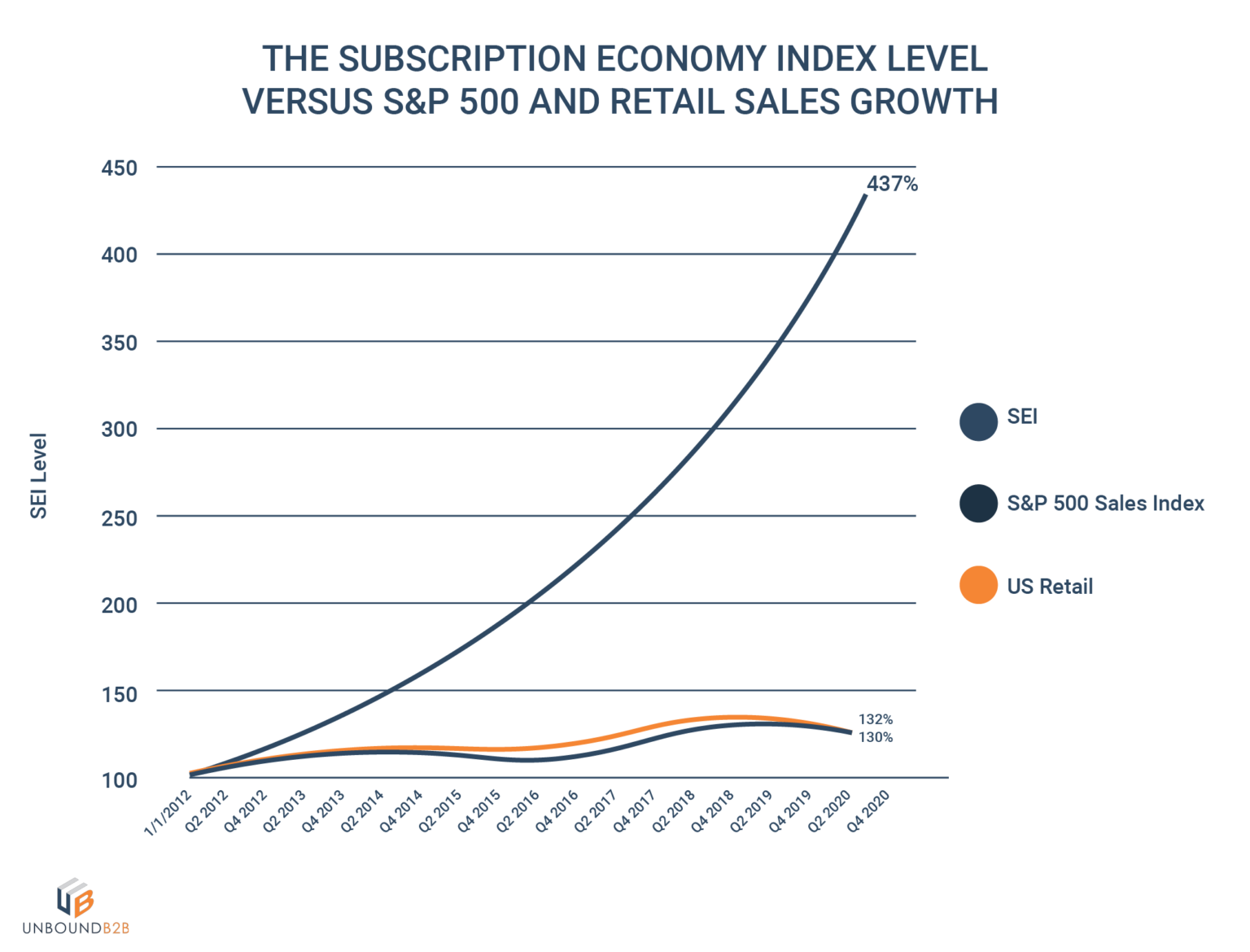
Talking about the SaaS business sector, this business model can help them in many ways, such as:
Cost-effective
Subscription SaaS models are significantly less expensive than traditional pricing options. Rather than budgeting and accounting for a large, one-time purchase, costs can be divided into smaller parts. As a result, it makes it easier to define the annual budget and taxes.
Transparent costing
Because SaaS subscription expenses are recurring and itemized, organizations can quickly and accurately predict their SaaS payments for a given period. Similarly, businesses can plan for expansion by forecasting expenses based on current pricing.
Better customer support
There is always a real risk that a client organization will cut ties and switch to another vendor for subscription SaaS providers. To avoid this, vendors must be capable and willing to provide the best support possible.
Unfortunately, it also applies to the service; users will cancel their subscriptions and move on if it needs to be more user-friendly, intuitive, and powerful. This means that subscription SaaS providers compete to provide a satisfying customer experience.
Scalability without limits
When businesses expand or contract to meet demand, their IT resources must also expand or contract. Subscription SaaS allows for this flexibility; organizations can easily modify their subscription agreements to meet their needs.
Secure software environment
Cyber threats are dynamic, ever-changing threats. As a result, businesses require dynamic software security to protect themselves. The ability of subscription SaaS vendors to stay one step ahead of the various threat vectors that target their clients is critical to their survival.
It includes not only issuing patches and solutions to newly discovered vulnerabilities but also proactively and tirelessly searching for any undiscovered holes so they can be closed before they are exploited. Most of the time, these updates are deployed automatically, with no downtime.
It can prevent businesses from the trouble of setting up in-house IT departments. Instead, their software developers can handle all the technical and security issues within the subscription.
Experiment with new technologies
Organizations must be able to pivot quickly to capitalize on new opportunities or respond to emergent situations in today’s business world. Subscription SaaS allows them to experiment with new approaches, implement new services, and even try other vendors to find the best solutions for specific needs.
If these trials do not produce positive results, organizations can simply revert to their previous subscriptions when their current subscription expires. This freedom from vendor and tool lock-in is a significant advantage that distinguishes subscription SaaS from traditional perpetual licensing.
Top 10 SaaS Marketing Strategies
As per Statista, the SaaS market is estimated to be worth approximately 145 billion U.S. dollars in 2022.
With that in mind, it’s crucial to market the subscription model and attract more customers to use your product. Here are the top 10 strategies that software subscription-based businesses can adopt to improve their sales and revenue:
1. Implement Content Marketing Strategies
Many SaaS marketers use content marketing to create brand awareness, attract visitors to the website, and generate more software subscriptions.
Additionally, it’s essential to educate the prospect about the SaaS products; otherwise, you may lose your potential customer.
A study shows that people are 131% more likely to buy from brands that educate them with content.
Along with educational content, you can also create engaging content through articles, blogs, social media posts, etc.
For example, Moz publishes blog posts every single day in various categories such as email marketing, keyword research, and more.
Therefore, it lets readers research their pain points and rectify all their problems quickly.
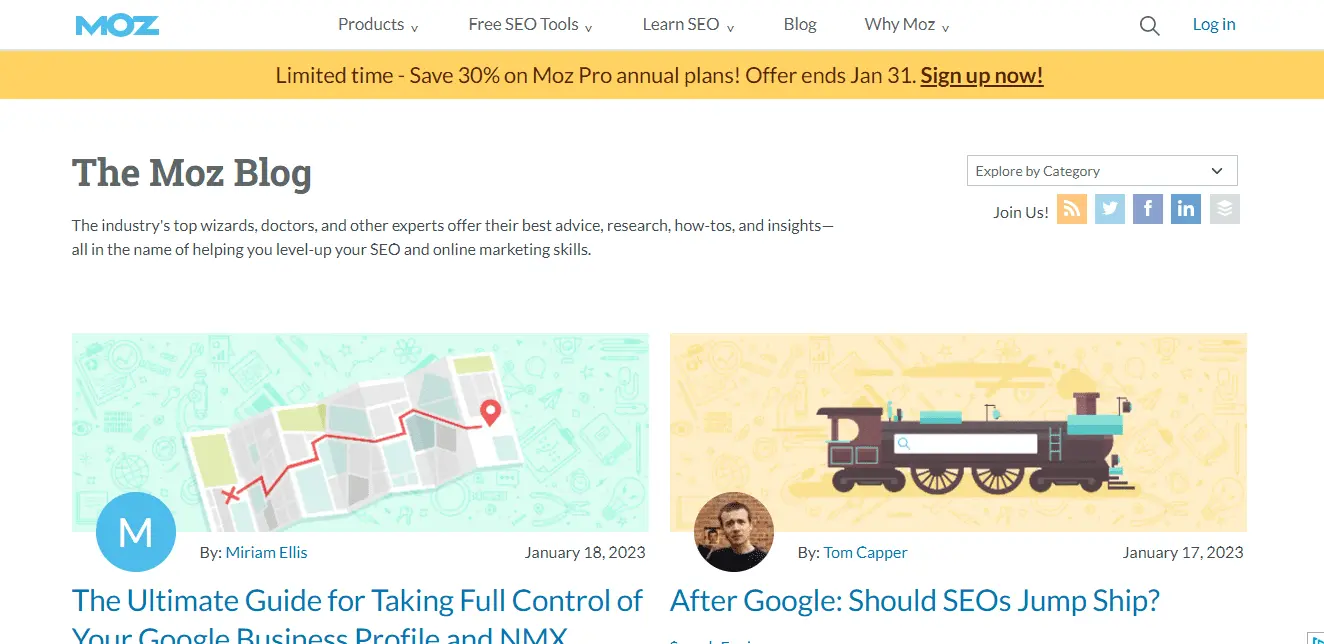
Tip: Unlike PPC, where you generate leads after spending on ads, you can drive leads organically in content marketing.✔
2. Emphasize on Email Marketing
Email marketing may sound like an old-school concept, but it’s an integral strategy to date.
Either you want to focus on customer retention or generate exceptional ROI, email marketing can help you grow SaaS companies.
Here are the reasons why SaaS marketers keep email marketing in their strategic plans.
- Get more software subscriptions in a single click.
- Showcase your existing customers how to leverage platform services.
- Quick access links to blogs and authoritative articles.
SaaS companies send out various emails, such as company newsletters, new product/feature announcements, webinars, and surveys.
I’d suggest automating your email marketing; for instance, emails should be triggered when a prospect sign-ups for a free trial.
Below is an example of Trello; they send you an email once you create a new account.
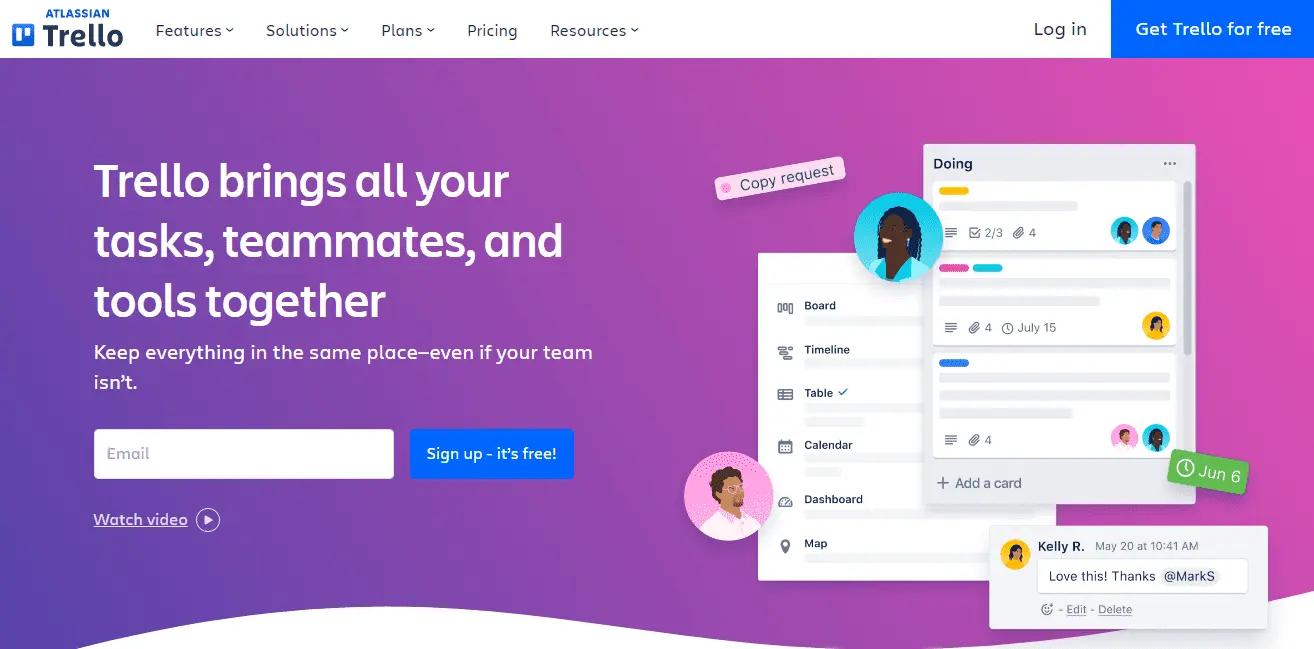
3. Search Engine Optimization (SEO)
SEO plays an essential role in increasing organic website traffic, which helps you get more software subscriptions.
Generally, you need to focus on two categories, i.e., on-page and off-page SEO.
Various SaaS companies like Hubspot, Hootsuite, and Drift used SEO strategies to gain millions of visitors organically.
When it comes to SEO, an essential factor is to measure the results.
After optimizing your site, you need to measure your site’s performance in search engine rankings, traffic, and conversion.
For example, Pepipost has seen a 2x increase in leads via organic traffic after applying content-centric SEO effort.
4. Offer Free Trials to Generate Subscriptions
Offering free trials to prospects is one of the fastest ways to get more software subscriptions.
People won’t use a SaaS product just because of a free trial; instead, they’re investing time to get familiar with the product.
Therefore, there’s a high chance of converting a prospect from a free trial to a paid version.
Simply put, free trials not only help users understand your product but also give a reason to subscribe to your paid version.
For example, Shopify offers a 14-day free trial to users that lets you set up your online store.
However, you need to choose a monthly plan before you start selling your products.🛒

Tip: While providing free trials, you should provide technical support, so users won’t find your product complex to use.
5. Create an Online Presence on Social Media
Over 200 million businesses use Facebook to connect with customers, and 57 million companies are registered on LinkedIn.
So, if a SaaS company is not listed on social media platforms, then you can assume what they’re going to miss out on.
However, choosing a social media channel depends on where the target audience resides.
Now, you might be thinking, “Do software subscriptions increase just by moving to social media?”
Partially correct!
Simply registering on social media platforms won’t make a huge difference.
Instead, you need to create informative and engaging content for your audience regularly.
For example, Databox used Twitter to showcase a case study on how one of its users built SEO reports to visualize ROI.

6. Educate Your Target Audience Via Webinars
Either it’s blog posts, ebooks, or webinars, each of them helps you boost brand awareness, and build trust and relationships.
A study by Demio depicts that 78 out of 100 SaaS companies use a webinar strategy to get more software subscriptions.
To drive a successful webinar, you need a strong strategy; otherwise, you’ll end up wasting your time and resources.
Firstly, you need to decide the purpose of the webinar, such as case study, educational content, registration form, product demo, etc.
For example, Intercom offers webinars based on their product categories, including conversation support, conversational marketing, and more.
You can register for their upcoming webinars, or you can also watch their pre-recorded webinars.
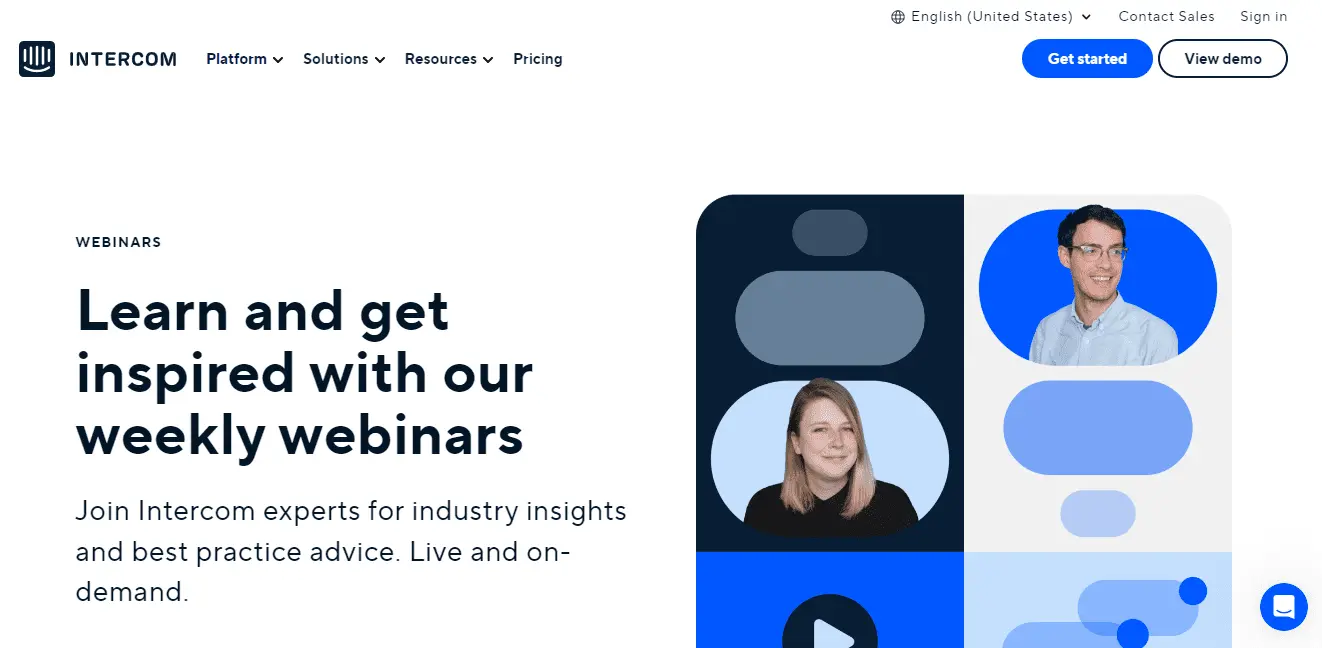
7. Set Up a Referral Program
In the referral program, existing customers recommend your product in their network to grow your customer base.
According to a study, referred leads convert 30% better than leads acquired via other marketing channels.
However, if you don’t incentivize heavily, a group of marketers thinks you won’t receive a good number of referrals.
On the other hand, some say that you’ll receive low-quality referrals if you award heavy incentives.
I’d suggest you test referral marketing as per your SaaS product and then optimize accordingly.
For example, Dropbox used a referral program where they offer 500 MB of bonus space to each one who installed the Dropbox.
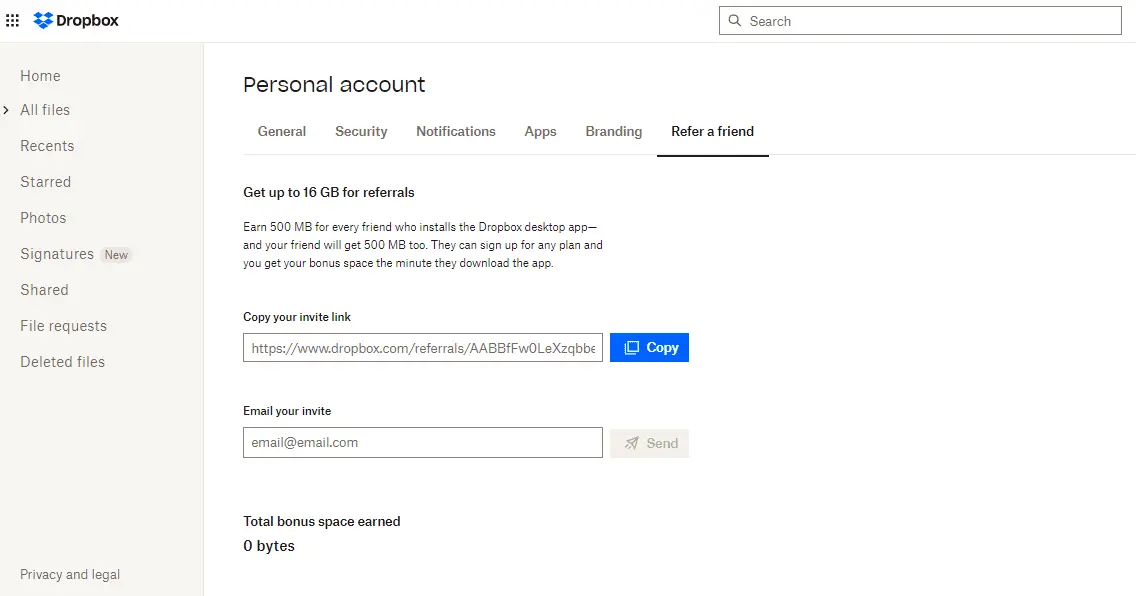
8. Connect With Industry Influencers
In influencer marketing, you collaborate with influencers in your niche, and they promote products in front of their audience.
82% of survey respondents believe that influencer marketing campaigns attract more quality customers than any other form of marketing.
Below are some of the benefits of collaborating with an influencer for your SaaS product.
- Reach the right audience and communicate effectively.
- Deliver content according to the target audience’s interest.
- Increase engagement and generate higher ROI.
To achieve better results, you need to find relevant influencers who have a good audience base in your niche.
I’d suggest using Buzzsumo as it lets you identify creators with engaged audiences and genuine authority on the web.
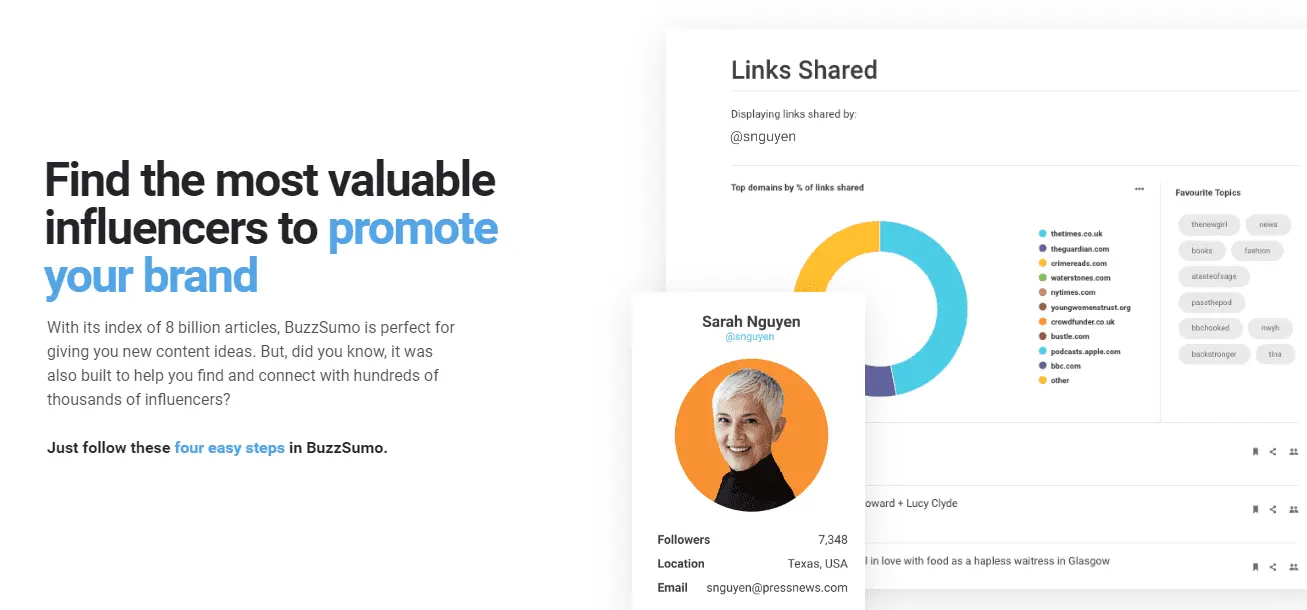
9. Leverage the Power of Partner Program
Partner programs are often confused with referral programs; however, there are specific differences between the two.
The primary difference is in the partner program; you don’t have to be the existing user to refer to the other prospect.
As a SaaS marketer, you have to pay affiliates only after closing a deal with the leads provided by them.
For example, Zendesk offers three value-based partner programs, namely Affiliate, Select, and Master.
By generating revenue through referral, resale, or implementation of Zendesk products and services, you can acquire new customers.
It lets them build partnerships with start-ups as well as large companies. Here are the details for each partner program.
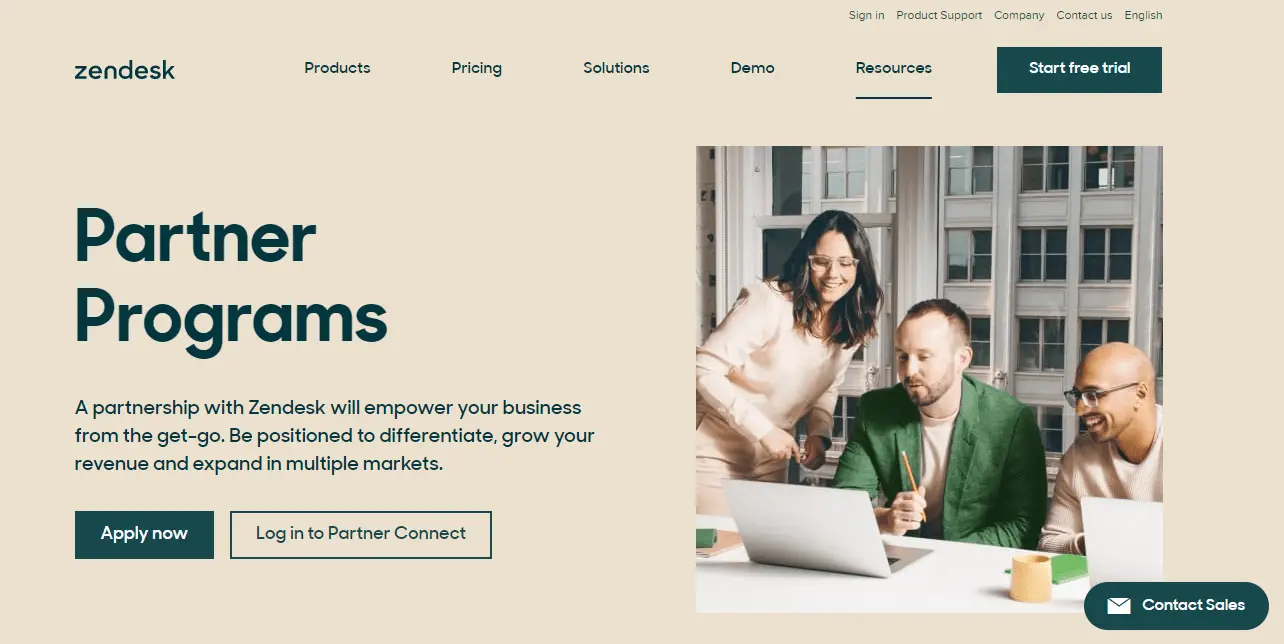
10. Publish Customer Reviews and Success Stories
Customer reviews are a powerful way to get more software subscriptions across industries — the SaaS sector is no exception.
According to research, when a product gets five reviews, purchase chances increase by 270% compared to products having no reviews.
To get honest reviews, you only need to ask your loyal customers to review your SaaS product.
You can either publish customer testimonials on your website or get your product listed on SaaS-specific review platforms, including G2, Capterra, Trustpilot, etc.
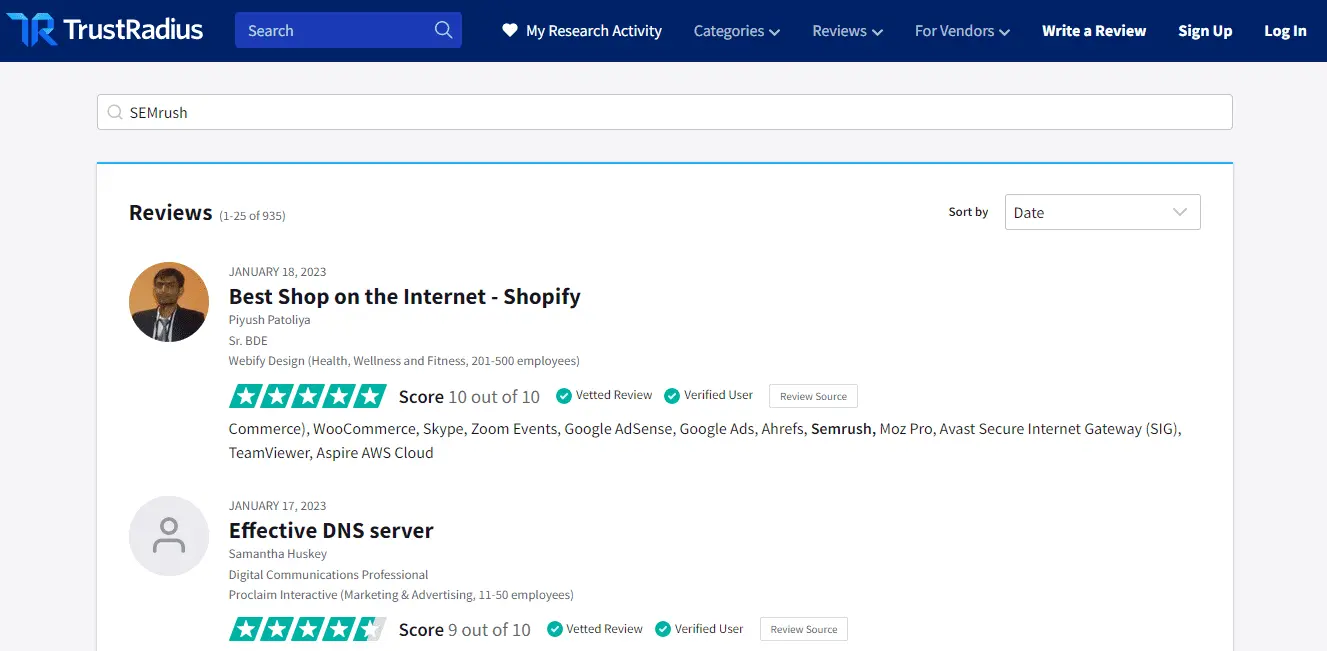
Meanwhile, you should work on case studies which are among the best ways to showcase how your product solves the problem.
How to Measure Your SaaS Subscription Sales?
Now that you know the top marketing strategies to boost your subscription sales, your work still needs to be completed. Next, you need to monitor your subscription metrics to determine which marketing strategies have helped improve your sales.
It can also guide you to improve your marketing strategies to obtain desired returns. Using the marketing tools, you can monitor various subscription sales statistics and figures, such as:
Monthly Recurring Revenue (MRR)
MRR is the total revenue a company receives each month from various subscriptions.
It’s one of the most crucial metrics in any subscription business. It is because it displays the total monthly revenue generated by active subscriptions. It is the most widely used KPI in recurring businesses.
Your MRR is calculated by multiplying the total number of customers by monthly subscription rates.
It also applies to annual, quarterly, and semiannual subscription plans. In such cases, divide the total rate by the number of months to get the monthly rate.
Aside from MRR, you can also track new accounts, upsells, downsells, and churn every month.
Annual Recurring Revenue (ARR)
This subscription business metric examines your company’s recurring revenue over a year. In this case, multiply your monthly recurring rate by 12.
If you have annual subscription terms, this is the best metric to track rather than MRR. ARR is calculated by adding up all yearly subscription fees and multiplying your annual rate by the number of subscribers.
Deduct freemiums as well to exclude months where payments were not requested.
Annual recurring revenue is important because it allows you to track your overall performance trends. These are especially useful when setting long-term goals for a business.
It provides you with enough information to make accurate financial projections.
You can use annual recurring rates to determine which strategies work best for improving your company’s performance.
Average Revenue Per Account (ARPA)
It is one of the best subscription business metrics that track the monetary contribution of each user account to your company.
It is a more specific method of analyzing revenue than monthly recurring revenue, mainly for tiered subscriptions.
This is because ARPA can be analyzed based on each package for more specific numbers.
ARPA is calculated by dividing your full monthly recurring revenue by your total number of subscribers. This includes any freemium subscribers you may have.
ARPA assists in determining how much of your subscriptions come from expensive packages versus those that are less expensive.
For example, an increase in your ARPA could indicate an increase in your premium subscriptions.
Customer Acquisition Cost (CAC)
CAC is a subscription business metric that indicates how well you budget your resources.
Your customer acquisition costs should be kept to a minimum. It should be significantly less than your customer’s lifetime value. It should be profitable to acquire new customers.
To calculate your CAC, add your total sales and marketing costs for customer acquisition. The value is then divided by the total number of new customers.
You must analyze your customer acquisition costs through specific marketing channels.
Separate email marketing costs from social media marketing costs, for example. Also, separate the clients you acquire through each channel while calculating your CAC.
Customer Lifetime Value (CLV)
This is the final point to be discussed, but it is the most important subscription metric.
CLV is the total revenue each client generates throughout their subscription. This could be a month, a year, or even a lifetime.
The revenue generated by each client throughout their relationship with your company should exceed the cost of acquiring them and providing the service.
How to Sell Subscriptions for SaaS Businesses: Bottom Line
There you go, people! Finally, you have explored a complete guide on how to sell subscriptions faster for your SaaS business.
You have learned about subscription-based businesses and how they can benefit your SaaS business growth. The guide has also explained 10 awesome SaaS marketing strategies to sell more subscriptions to your targeted audience.
You are all set to boost your subscription sales in 2023. But if you need any help implementing marketing strategies or monitoring them, you can always connect with our team. We will help you improve your subscription rate and revenue in no time.
So let’s get in touch today.
Our blog
Latest blog posts
Tool and strategies modern teams need to help their companies grow.

B2B companies must generate leads that are ready to buy their products in order to me...

In the absence of a constant flow of leads, sales teams can't meet their targets and ...

Podcasts and webinars are powerful tools that marketers can use to reach new audience...



